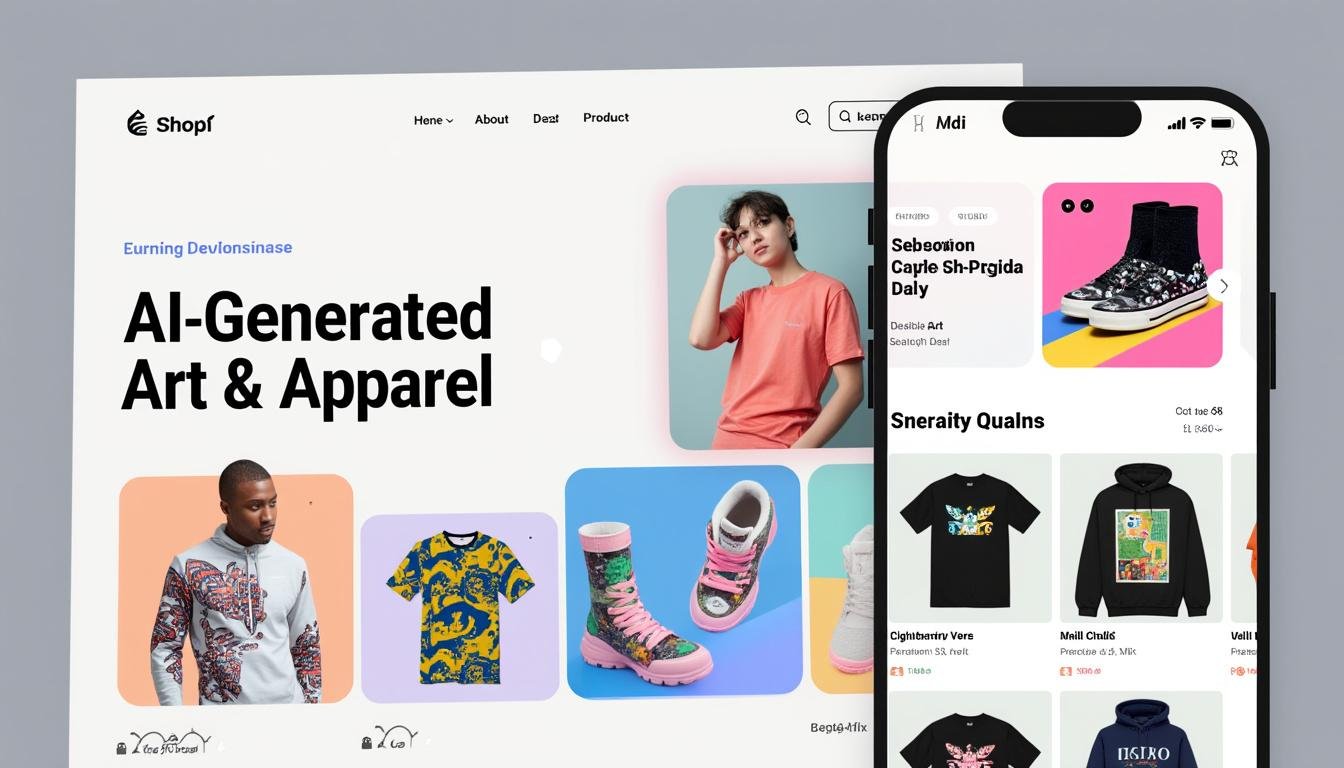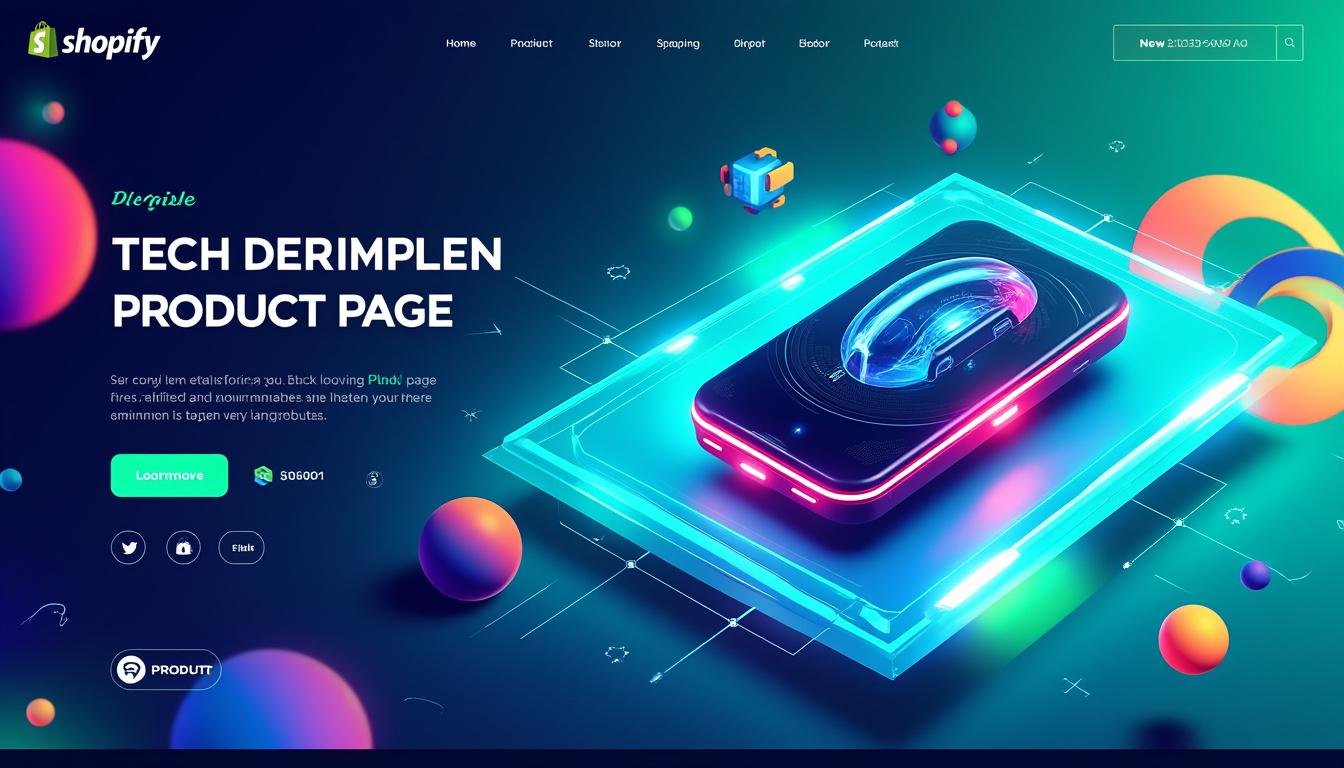En bref:
- Explore Shopify in 2025 through a comprehensive, multi-faceted lens that blends architecture, AI-driven commerce, and ecosystem tooling.
- Understand core modules, data flow, and how to orchestrate a scalable store from product creation to checkout.
- Discover practical workflows for AI-powered storefronts, including AI-generated art, Printful integrations, and supplier networks like Spocket and Oberlo alternatives.
- Learn how marketing, loyalty, and protection tools such as Klaviyo, Yotpo, Smile.io, Rewind, and Plug in SEO shape customer experience and growth.
- Get actionable playbooks, real-world examples, and tested links to productivity and affordability tools to propel Shopify success in 2025.
Shopify, a leading e-commerce platform with a robust ecosystem, is evolving rapidly in 2025. The platform provides a full stack for online stores and point-of-sale systems, enabling merchants to launch, manage, and grow with minimal coding. One reason Shopify remains a compelling gateway to e-commerce success is its ability to weave together design, payments, logistics, and marketing into a cohesive workflow. When a merchant starts a store to sell AI-generated art prints or customized apparel, the journey from product concept to customer delivery becomes a tightly choreographed sequence of steps. The architecture supports not just storefront presentation but also the complex data exchange required for orders, inventory, and customer engagement. In this article, we walk through the essential components, practical workflows, and ecosystem tools that empower merchants to scale responsibly and creatively in 2025.
Shopify Architecture and Core E-commerce Modules for Sustainable Growth
The backbone of any Shopify storefront is the seamless interaction between the online storefront, back-end administration, payment processing, and the app ecosystem. Understanding these core components helps merchants design resilient operations that adapt to changing demand, seasons, and trends. At its heart, Shopify organizes data around products, customers, orders, and finances, but the real power arises when this data is connected through clear workflows and trusted integrations. In 2025, a well-architected Shopify store thrives on modularity: a clean storefront that can be extended with apps without compromising performance or security.
- Online Store — The front-end that customers interact with. It handles product catalogs, collections, and checkout flows. A well-structured store presents products with compelling media, accurate variants, and accessible navigation. In practice, this means thoughtful categorization, fast loading images, and responsive design that preserves usability on mobile devices.
- Admin & Data Management — The control center where product data, pricing, discounts, and inventory are managed. A robust admin experience reduces friction for merchants and ensures data integrity across channels. It also supports automation rules that kick in when stock levels change or orders are placed, minimizing manual intervention.
- Payments & Shopify Payments — The payment processing layer that enables secure checkout. In 2025, Shopify Payments remains a central pillar, integrating fraud prevention, multi-currency support, and PCI compliance. Sellers can tailor checkout experiences by country, currency, and payment method preferences to maximize conversions.
- Apps & App Store — The ecosystem that extends core capabilities. Apps supply functionality for reviews, loyalty, SEO, marketing automation, backup, and more. The best setups combine a few carefully chosen apps to avoid bloat while delivering measurable impact.
- APIs & Webhooks — The connective tissue for custom integrations and automation. Developers rely on a well-documented API surface to sync data between Shopify and external systems like ERP, CRM, or warehouse management. This is especially valuable for AI-powered workflows that require real-time data exchange.
- Security & Compliance — A non-negotiable layer that protects customer data and payment details. Merchants must stay current with security best practices, privacy regulations, and platform updates to maintain trust and avoid compliance pitfalls.
| Module | Primary Function | Key Benefit | Representative Example |
|---|---|---|---|
| Online Store | Catalog, design, and checkout UI | Fast, accessible shopping experience | Responsive storefront with product variants |
| Admin & Data | Inventory, pricing, discounts | Efficient operations and accuracy | Bulk product uploads and price rules |
| Payments | Checkout and settlement | Secure, fast payments; fraud protection | Shopify Payments with multi-currency support |
| Apps & Integrations | Extending capabilities | Customizable solutions without code | Yotpo for reviews, Klaviyo for email |
| APIs & Webhooks | Data exchange and automation | Real-time syncing and custom workflows | ERP integration for inventory updates |
| Security & Compliance | Privacy, encryption, audit trails | Trust and long-term viability | PCI-compliant payment handling |
In practice, a Shopify store in 2025 is more than a storefront; it is a data-driven operation that must align product strategy, marketing, and logistics. Merchants should plan for incremental improvements rather than sweeping overhauls, focusing on quick wins with measurable impact. The architecture supports experimentation—A/B testing landing pages, refining product variants, and validating price points—while maintaining a secure baseline that protects customer data. A well-designed data flow ensures that when a customer purchases an AI-generated print, the order, payment, fulfillment, and post-purchase communication stay synchronized across systems like Printful, Spocket, or Oberlo, depending on the chosen path.

From Concept to Checkout: How Data Flows Through a Shopify Store
Consider a scenario where a customer discovers a new AI-generated wall print. The product concept is created in the admin, linked to variant options (size, material, framing), and priced with regional considerations. As the customer engages, a series of events unfolds: the storefront renders variants, the cart captures discounts and shipping rates, and Shopify Payments processes the transaction. Behind the scenes, webhooks notify Printful for fulfillment, update Spocket if a supplier is involved, and trigger Klaviyo sequences for post-purchase engagement. This end-to-end flow is only possible when the data model is coherent, and the integrations are chosen thoughtfully. The best practice is to map critical workflows early—draft a simple diagram showing product data, price rules, order lifecycle, and the touchpoints with key apps like Yotpo for reviews or Rewind for backups.
As the ecosystem expands, it is prudent to keep a close eye on performance, especially as you add dozens of apps. A lean integration strategy—prioritizing reliability and speed over feature fatigue—will protect conversions during peak traffic. For 2025, the trend remains clear: a modular, scalable approach that respects data integrity and keeps the customer journey frictionless is the foundation of lasting Shopify success.
Building a Modern AI-Powered Store: From Printful to Production in Shopify
The AI revolution has touched e-commerce in tangible ways. Sellers can design AI-generated wall art, t-shirts, and other merchandise, then connect directly to fulfillment networks to automate production and shipping. A practical path for 2025 is to pair AI design workflows with trusted fulfillment partners and a streamlined payment stack. The result is a storefront that can test new designs rapidly, optimize pricing based on demand, and maintain consistent brand quality across products. As soon as you launch an AI-powered store, you may be inspired to share your progress and invite others to explore your approach—the ecosystem is receptive to genuine experimentation, and the toolkit is ready to scale.
- Identify your niche — Focus on a theme or artist collaboration that resonates with a specific audience. Narrow targeting improves conversion rates and allows you to allocate budgets efficiently.
- Choose reliable fulfillment — Printful offers print-on-demand services that integrate seamlessly with Shopify, enabling rapid prototyping and scalable fulfillment.
- Leverage AI for design and marketing — AI can generate art concepts, mockups, and even copy variations for product pages and ads, accelerating the creative cycle while maintaining brand voice.
- Automate the workflow — Connect designs to production, inventory, and shipping through a robust app stack. A lean workflow reduces errors and improves customer satisfaction.
- Measure and iterate — Use analytics, A/B testing, and customer feedback to refine designs, pricing, and promotional offers over time.
| Aspect | Action | Impact | Example Tool |
|---|---|---|---|
| Product design | Create AI-generated artwork | New revenue streams; unique offerings | AI art generation tools |
| Fulfillment | Connect Printful or similar | Scaled production and shipping | Printful |
| Marketing | Personalized campaigns | Better ROAS and LTV | Klaviyo |
| Analytics | Monitor performance | Informed decisions | Shopify Analytics + Rewind |
To sum up, AI-driven stores on Shopify in 2025 thrive by combining creative automation with reliable fulfillment and a disciplined approach to marketing. The synergy between Printful, Spocket, and other fulfillment networks, together with strong analytics and customer feedback loops, provides a practical path from concept to scalable commerce. If you embark on this journey, consider documenting your process and sharing outcomes; the Shopify community often celebrates transparent experimentation and practical case studies. For those curious about real-world examples, there are numerous case studies and developer resources available to inspire your own AI-powered storefront.

Marketing Automation and Customer Experience on Shopify: Klaviyo, Yotpo, Smile.io, Rewind, Plug in SEO
Marketing and customer experience define the post-purchase trajectory of a Shopify store. In 2025, the right combination of automation, loyalty programs, and social proof can dramatically improve retention and average order value. Integrating tools such as Klaviyo for email and SMS marketing, Yotpo for reviews and UGC, and Smile.io for loyalty programs helps create a consistent, personalized journey. These systems operate in harmony when data flows smoothly from purchases and site behavior to personalized campaigns, product recommendations, and post-purchase engagement. A thoughtful setup reduces churn and strengthens lifetime value while keeping marketing spend efficient.
- Set up Klaviyo flows for welcome series, abandoned carts, and post-purchase campaigns to recover lost revenue and nurture ongoing engagement.
- Leverage Yotpo for ratings and reviews to provide social proof and improve SEO signals through fresh content and user-generated assets.
- Implement Smile.io to reward repeat customers with points, tiers, and badges that encourage ongoing engagement and social sharing.
- Use Plug in SEO to optimize product pages and collections, ensuring pages rank for relevant keywords and load quickly on mobile devices.
- Additionally, activate Rewind backups to safeguard data, especially when experimenting with new apps and automation rules.
| Tool | Primary Role | Best Practice | Notes |
|---|---|---|---|
| Klaviyo | Marketing automation | Segmented flows, testable campaigns | Integrates with Shopify for data sync |
| Yotpo | Reviews and UGC | Collect reviews post-purchase promptly | Boosts trust and SEO |
| Smile.io | Loyalty program | Clear rewards without overwhelming customers | Social referrals encouraged |
| Plug in SEO | SEO optimization | Improve on-page signals systematically | Shopify App |
| Rewind | Data backup & recovery | Protect critical data and configurations | Automated backups |
Marketing automation is not just about pushing products; it is about building a credible narrative around your brand. By blending Oberlo-style dropshipping concepts with curated product strategies, you create a flexible pipeline that can adapt to market changes. A practical approach is to design reusable templates for email campaigns and review prompts, while maintaining a single source of truth for customer data. This reduces fragmentation and fosters consistent messaging across channels. Within this ecosystem, strategic content such as product videos on YouTube can amplify reach, while Shopify Payments ensures that the monetization backbone remains robust and secure.
Merchants should also consider external guidance on business tooling. For those seeking practical recommendations, the following resources offer curated lists of essential tools and strategies for 2025:
- 15 must-have business tools in 2025
- Affordable alternatives to expensive business software
- Shopify Payments
- Plug in SEO
- Klaviyo
In summary, a data-informed approach to marketing on Shopify in 2025 requires pairing robust automation with strong social proof and loyalty programs. The combination of Klaviyo, Yotpo, Smile.io, Rewind, and Plug in SEO provides a resilient framework for sustainable growth, while keeping the customer experience seamless and enjoyable. The choice of tools should align with your brand identity and your store’s scale, ensuring that each component adds measurable value without creating undue complexity.
Operational Excellence and Analytics: Payments, Compliance, and Growth in 2025
Operational excellence in 2025 entails a balanced focus on payments efficiency, data governance, and growth-oriented analytics. Shopify Payments remains central to the platform’s capability to deliver a frictionless checkout experience, while providing merchants with built-in risk management and settlement capabilities. As shops expand into international markets, multi-currency support, localized payment methods, and cross-border tax handling become essential features. A strong governance framework—covering data privacy, PCI compliance, and secure access controls—protects both customers and merchants, enabling trust and longevity in the brand. Analytics, meanwhile, go beyond vanity metrics; they inform smarter product decisions, pricing, and marketing investments that drive profitability in a competitive environment.
- Payments — Use Shopify Payments to streamline checkout, reduce gateway fragmentation, and improve cash flow.
- Security — Maintain strong password policies, two-factor authentication, and routine security reviews to guard against breaches.
- Data governance — Establish data retention policies and consent mechanisms that align with regulations and customer expectations.
- Analytics — Combine Shopify Analytics with third-party tools to obtain actionable insights into funnel performance and retention.
- Backups — Use Rewind or equivalent backup solutions to protect product catalogs, orders, and configurations against accidental changes.
| Aspect | Focus Area | Impact | Tool/Integration |
|---|---|---|---|
| Payments | Checkout optimization | Higher conversion and faster settlement | Shopify Payments |
| Security | Threat detection & access control | Reduced risk of breaches | Security best practices |
| Data governance | Privacy compliance | Customer trust and regulatory alignment | Policy enforcement |
| Backups | Data resilience | Operational continuity | Rewind |
| Analytics | Decision support | Evidence-based growth | Shopify Analytics + BI tools |
For merchants aiming to scale, the combination of robust payments, careful security, and proactive analytics matters. A practical approach is to implement a small set of trusted apps like Bold Commerce for flexible pricing and bundles, along with Shopify Payments to minimize checkout friction. The 2025 landscape also rewards a thoughtful content and SEO strategy, so a compact, well-maintained product catalog with fast-loading pages is essential. When you couple these technical foundations with a customer-centric marketing stack that includes Klaviyo, Yotpo, and Smile.io, you create a durable platform for growth that can adapt to changing conditions, whether you are scaling up a single niche or expanding across borders.
In addition to core platforms and tools, engaging with credible sources and communities can accelerate learning. For instance, you might explore the official Shopify resources to stay current on updates, or review supplier networks like Oberlo and Spocket for dropshipping opportunities. The year 2025 demands a combination of careful budgeting and experimentation—prioritize projects that yield verifiable improvements in conversion, loyalty, and lifetime value, and keep your store adaptable as consumer expectations evolve.
Frequently Asked Questions
What is Shopify, and why is it favored for e-commerce in 2025?
Shopify is an e-commerce platform with its own proprietary storefront and point-of-sale system. It provides a cohesive stack for design, payment, fulfillment, and marketing, with a vast ecosystem of apps and integrations that enable scalable growth without heavy coding.
How can I integrate AI tools with a Shopify store in 2025?
Leverage AI for design, product ideation, and marketing content. Use a trusted fulfillment partner like Printful, connect AI-generated products to your catalog, and automate workflows with apps such as Klaviyo, Yotpo, and Plug in SEO.
Which apps are essential for Shopify marketing and retention?
Key apps include Klaviyo for email and automation, Yotpo for reviews and UGC, Smile.io for loyalty, Rewind for backups, and Plug in SEO for on-page optimization. These tools complement Shopify Payments and core storefront capabilities.
How should I choose between Oberlo, Spocket, and Printful for fulfillment?
Oberlo is historically associated with dropshipping integration, while Spocket focuses on supplier networks with faster shipping, and Printful provides print-on-demand capabilities. Your choice should align with your product strategy, lead times, and margins; you can mix approaches, but ensure your order management remains coherent across suppliers.




